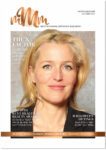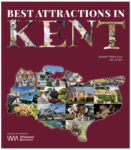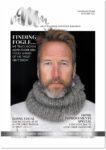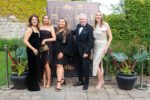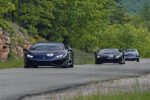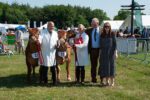Lullingstone Country Park is a favourite for walkers – but little is known about its wartime secret! Robin J Brooks delved into the archives and met a local man whose wartime job was at Lullingstone, and until the 1980s was sworn to secrecy.
Although the wartime airfield decoy scheme had been planned by early June 1939, it was to remain dormant until three months later, when war was declared.
By the new year of 1940 it had become obvious that 11 Group of Fighter Command, which covered an area from Portsmouth to South Norfolk, would bear the brunt of fighting in what was to become known as the Battle of Britain.
One of the airfields within the group was Kent’s Biggin Hill, a sector station encompassing the area from Hawkinge to Eastbourne on the coast and inland from the coast up to Croydon.
Being the controlling station for several other Kent fighter airfields, Biggin Hill was one of those selected to receive the ultimate form of deception by way of a decoy airfield.
This was to be built in a beautiful section of the Darenth Valley between Eynsford and Shoreham at a site named Lullingstone, already famous as the locality for Lullingstone Castle and the home of the Hart Dyke family. It is currently home to plant hunter Tom Hart Dyke and his wonderful World Garden.
The castle for many years previously had been more commonly known for the rearing of silk worms, which had produced silk for numerous royal commissions, including the late Queen Elizabeth’s wedding dress and Coronation robes. Lady Zoe Hart Dyke had seen her thriving business in silk continue throughout the 1930s and it was revived again after the war. Even the proposal to build a new London Airport at Lullingstone to replace Croydon did nothing to stop the flourishing silk industry, and the airport proposal was eventually turned down.
The idea of using the Darenth Valley for another aviation-linked purpose, however, came to the attention of the Air Ministry when a department known as ‘Colonel Turner’s Department’ became responsible for the siting of decoy airfields. Lullingstone fitted the criteria exactly.
By late September 1939 specifications for day and night decoys had been submitted and issued for further comment. Colonel John Turner, an ex-First World War Royal Engineer, outlined the general principles on which his decoys would work.
Day sites would consist of two kinds representing either a grass flying field or a more specialised runway-type airfield. These were to be classified as ‘K’ sites and would contain dummy aircraft and buildings.
For night decoys, known as ‘Q’ sites, the original plan to use paraffin flare paths was discarded in favour of electric lighting. They were to be colour coded, for example yellow lights simulating the T-shaped wind indicator; red lights to simulate obstructions; white to indicate a runway; and finally car headlamps to suggest a taxiing aircraft – all of which would be controlled from a single bunker.
The first two ‘K’ sites were in service towards the end of February 1940, reaching a total of 25 by the third week of April. The Lullingstone site was situated opposite Beechen Wood to the west of the castle and was ready for operation by March.
The natural level plain of the Darenth Valley required very little work for it to become the perfect decoy, and with several buildings built for limited accommodation, stores and all the equipment needed to ensure the decoy was effective, thoughts turned to dummy aircraft.
Several companies had been given tenders to produce them, and with Biggin Hill being a Hurricane base the dummy aircraft were built by Green Brothers, an engineering company from Hailsham in Sussex.
Several were transported to the decoy and were erected on site. The Green Brothers design and construction had proved less expensive than many of the other contenders, such as Gaumont British Films and the Shepperton-based Sound City Film Studios. Thus the six Lullingstone Hurricanes were the forerunners of over 100 eventually built by Green Brothers for other decoys.
By April 1940 the site was ready for occupation. One of the first airmen to arrive was Leading Aircraftsman Eric Lever from Southampton. He had been called up at the beginning of the year, and after basic training for ground crew was sent to Biggin Hill, only to be seconded to the decoy at Lullingstone.
I interviewed Eric when he was the only known survivor from a group of around 10 airmen stationed at the site. Sadly, he passed away shortly after I met him.
He said: “When I joined the RAF in 1940 I first went to Blackpool for classification and basic airman training. I chose ground crew, but was not trained in any specific trade and so was classed as a ‘general duties’ airman.
“When I knew I had been posted to Biggin Hill I thought how lucky I was to be going to a Fighter Command airfield. However, after three weeks I was told I was going to be detached to a place called Lullingstone near Eynsford in Kent. Having never heard of either place you can imagine how I felt!
“I was first detached to Northampton for a few weeks, and it was here that someone informed me that it was not an airfield at all but a decoy site. Whilst at Northampton I learnt the basics of electrical wiring and how to lay a dummy flare path. At the end of the course I passed out as an LAC and duly arrived at Lullingstone with about 12 other airmen under the command of Flt Sgt McGee.
“Once there we were gathered together in one of the hastily built huts and told that we would work to a shift system. With no proper accommodation on the site we were to be billeted in the neighbouring villages of Eynsford and Shoreham. I and another LAC named Fred Carter stayed with Mrs Wiles at New Barn Cottage, which was situated just at the entrance to Lullingstone Villa.
“We used to cycle from the decoy site to the cottage on RAF bikes stamped all over with ‘Air Ministry Property’. I became very friendly with the daughter of the house, Peggy, and eventually married her after the war.
“Of course, living on a farm we were not really affected by rationing as the farm food was plentiful and very good. The local farmer, James Alexander, used his tractor and farm equipment to flatten out some of the large humps in the valley to make it look even more like an airfield.”
By September 1940 the ‘K’ site was operational. At the same time Biggin Hill saw daily raids by the Luftwaffe and was suffering badly from bomb damage. In Eynsford village, two bombs fell on farmland at West Lane on the 10th, with further indiscriminate bombing on the 15th and 25th September. These were not attacks intended for Biggin Hill but more the jettisoning of bombs by the enemy on their way back to France.
As the Battle of Britain faded out and the German attacks became the nightly Blitz, many decoy airfields were upgraded to ‘Q’ sites, including Biggin Hill. These were night decoys requiring dummy-lit flare paths and associated airfield lighting. The lights and all the other equipment were installed by engineers from the Air Ministry’s Directorate of Works, after which the airmen controlling the sites were given instruction on how to operate them.
LAC Eric Lever made many notes of his own during this time, and kept a copy of the exam questionnaire. He further recalled: “When the ‘Q’ site was installed a lot more service personnel came to Lullingstone to set it all up. Lady Zoe Hart Dyke came up from the castle to see what was going on. She had shut down the silk worm farm in early 1940 when we first arrived but was curious to see what was happening to her land.
“With the ‘Q’ site we came under total control from Biggin Hill and had a direct telephone link with the airfield. It was only when the air raid siren sounded, or the early warning radar forewarned of an attack, that Biggin Hill called and instructed us to fire up the generator and light the flare path.”
This instruction was set out by Colonel Turner in a circular sent to all station commanders, the reading of which appears very elementary: “The operations staff at the parent station will ring up the night dummy. Here there will be two men provided each night by the parent station taking watch. One will probably be asleep. The man on watch wakes his companion and starts the generator.
“When the generator has been started up, one man goes to the control panel and switches on the correct T, the obstruction lights and the head lamp. The two men take it in turns to manipulate the head lamp until an aircraft is heard approaching near enough to pick up the landing T. They will then switch it off and stand on watch.
“If the aircraft is friendly and signals by a Very light he wants to land, mistaking the Q lighting for a real aerodrome, the lights are switched on. If an enemy aircraft starts to attack, the obstruction lights only are switched off and the T flare path is left because on stations and satellites T flare paths cannot be extinguished in a sudden attack without great risk to personnel. The two men then take cover in their dugout and report.”
Although the instruction mentions just two men, in the case of Lullingstone it was considerably more. Technical notes taken at the time by Eric Lever show a dummy flare path classed as a ‘single line hooded flare path’. Eleven white lights at 100-yard intervals with red lights to indicate the beginning and end of the flare path supplemented by further white and red lights indicating aircraft navigation lights and obstructions. Bad blackout effects were portrayed by hooded lights situated at various localities adjacent to the main flare path. The ‘Q’ site, according to Eric, was lit on many occasions during 1941.
It was the devastating enemy raid on Coventry on the night of 14-15 September 1940 that prompted Prime Minister Winston Churchill and his scientific advisers to once more confer with Colonel Turner on the question of decoy fires for large towns and cities and aircraft manufacturing plants.
These were christened ‘Starfish’ sites, with many sharing the site with existing decoys. Such was the case at Lullingstone. With it being so close to London, the spring of 1941 saw a civil Starfish site become part of the airfield decoy complex. Over several weeks large tanks were placed hidden among trees and oil was directed from these along troughs to stacks of wood and coal augmented with grease-impregnated wadding. Originally hand lit by one of the airmen, later versions were electrically ignited.
The Starfish site was built primarily for the defence of the capital, thus Lullingstone now became classified as a ‘QF’ decoy. And although Eric Lever recalls the dummy flare path being lit on many occasions, he said he could only recall two or three occasions when Starfish was fired up. However, the night of 17-18 January 1943 did see the fires burning.
This particular night saw one of the heaviest attacks on London for some time. The enemy aircraft came in two waves with about 40 in the first phase and 50 in the second. Their target was the King George V Docks and the West India Docks. At Lullingstone the order was received at 04:41hrs on the 18th to light the fires. The Starfish site had recently been converted to electric ignition, and so by 04:50hrs the fires were burning brightly.
But although enemy aircraft were heard, no bombs were dropped on Lullingstone. However, the official report on the night operation states that intense searchlight activity on the approaches to the capital, decoy fires and other defensive measures ensured that out of 115 tons of bombs dropped, only 43 tons fell on or near London. The rest were dropped over the countryside.
A similar incident occurred over the night of 20-21 November 1943. With the instruction coming to light the Starfish at 20:23hrs, it was burning within five minutes, but due to the lack of enemy aircraft in the immediate area was doused by 21:00hrs.
The Starfish was to be lit twice more during 1943 but there is no record of bombs being dropped on it.
The year 1944 was to bring a resurgence in enemy attacks by night. Commencing in January, the new offensive by the Germans, which was to last until late spring, became known as ‘The Little Blitz’. Code-named by the Luftwaffe as ‘Operation Steinbock’, it was in retaliation for the Bomber Command attacks on the German cities.
The night of 13-14 February saw attacks on London commence with a new ferocity as waves of enemy aircraft droned overhead at Eynsford. It was a fine night with 8/10ths cloud and good visibility. Forewarned of an attack, Biggin Hill had instructed the dummy flare path to be lit at 20:32hrs. On duty that night was Eric Lever.
“It was a lovely clear night and we somehow knew that it was going to be a night for enemy attacks,” he recalled. “Biggin Hill rang through and told us to switch on the flare path, which we did. By 20:51hrs the decoy was well lit, and minutes later about 20 to 30 aircraft were heard overhead. Suddenly, they dropped flares which lit up the entire area.
“Looking out from our control bunker we could see right down the valley. Minutes later we heard the whistle of bombs and saw what turned out to be high explosive bombs dropped north east of the site.
“The noise of the explosions was deafening but they landed some way from the decoy. Then several other explosions were heard as further bombs landed, again some distance away. To most of us this was our first real baptism of fire and certainly was frightening as trees and bushes within the area burst into flame.
“We were then told to extinguish the flare path lights, leaving just the bad blackout ones on hopefully to confuse the enemy. Several aircraft appeared to fly low over the site but no further bombs fell. Once the aircraft had gone, Biggin Hill instructed us to switch the lights on again. Nothing else happened and we switched all the lights off at 21:55hrs. It was quite a night.”
The next morning bombs were reported as having landed at Shoreham Castle Farm and close to the Eynsford-Sevenoaks road. As far as the records show this was the last incident and the final use of Lullingstone decoy.
Just how successful was the ‘QF’ site? In terms of taking bombs intended for Biggin Hill, not very. Local talk at the time suggested that a broadcast by Nazi propagandist Lord Haw-Haw (William Joyce) did mention that the Luftwaffe knew all about Lullingstone. Certainly there were German maps showing the outline of the decoy site. On the other hand, Starfish may have taken some bombs intended for the capital two or three times.
By late 1944 the lighting had been removed, and after a final clean-up operation the personnel left Lullingstone.
Another question often asked is: “What did the nationwide decoy system contribute to the defeat of the enemy, and just how much did it help our war effort?”
Figures bandied about state that some 2,221.13 tonnes of bombs had been diverted, of which 2,091.9 tonnes had been drawn by night decoys and 129.2 tonnes by day decoys. If they did in fact achieve this then they can be considered worthwhile.
The Starfish site today is an area in the Lullingstone Country Park, while the ‘QF’ decoy is a golf course. In the various coppices are found concrete hardstandings and large areas of bricks, evidence of the control bunker area.
Today the site is a place of pleasure for young and old alike. Stretching the length of the Darenth Valley, it is one of the most beautiful country parks in the county – yet just how many visitors realise its past history?
• Dedicated to the memory of Eric Lever


